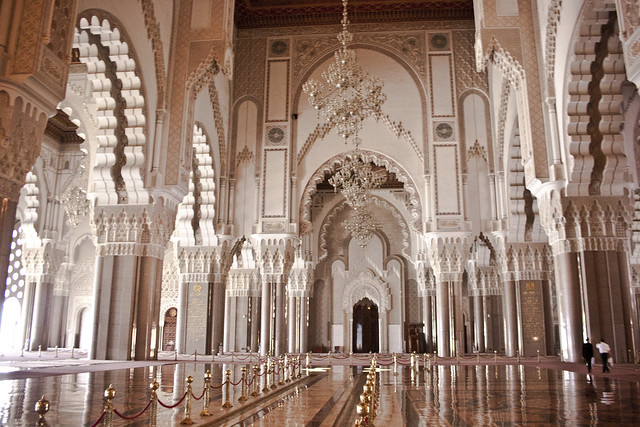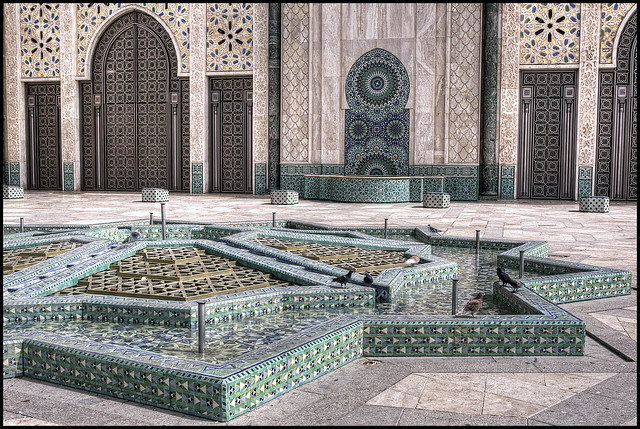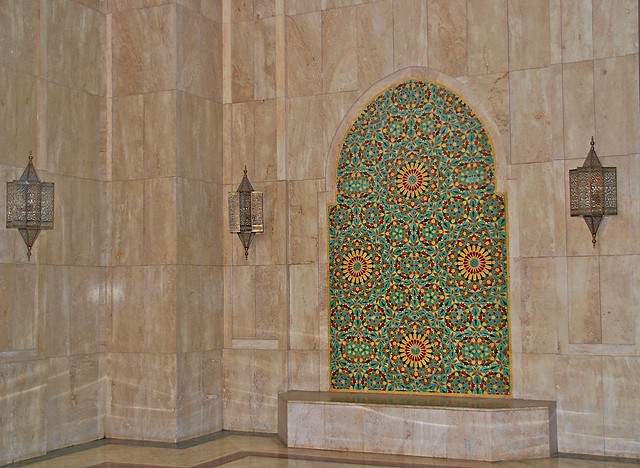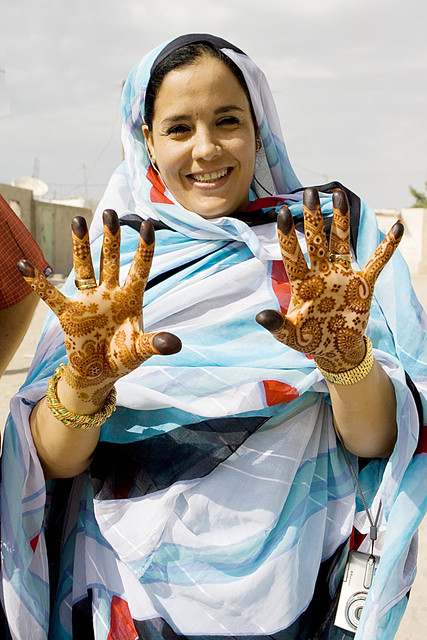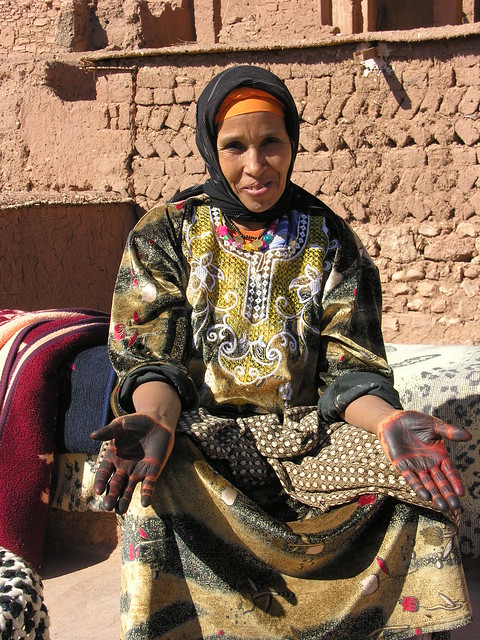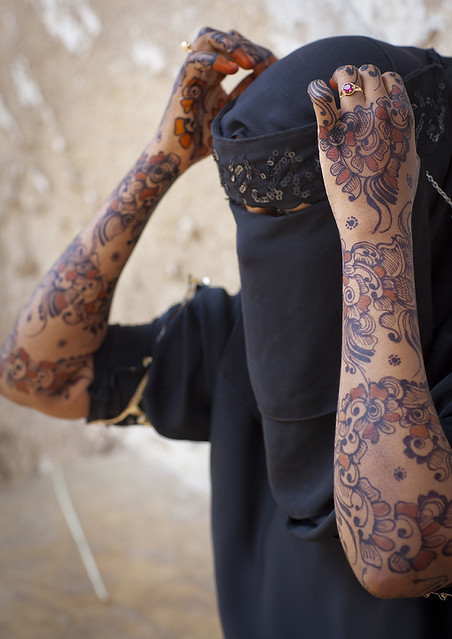Beirut is one of the major capitals of Arabic music along with Cairo and Dubai. Lebanese artists are some of the most famous and well known in the Arab world. In a way, Lebanese music is less Arab in general and has a tendency to turn out many "bubblegum pop" stars. Of course we have all heard that Lebanese women some of the most beautiful women on earth even though they have a reputation for frequently going under the knife. Plastic surgery aside, Lebanese artists are some of the most 
Carole Samaha
innovative and groundbreaking artists in the Middle East. It also helps that Lebanon is called "The 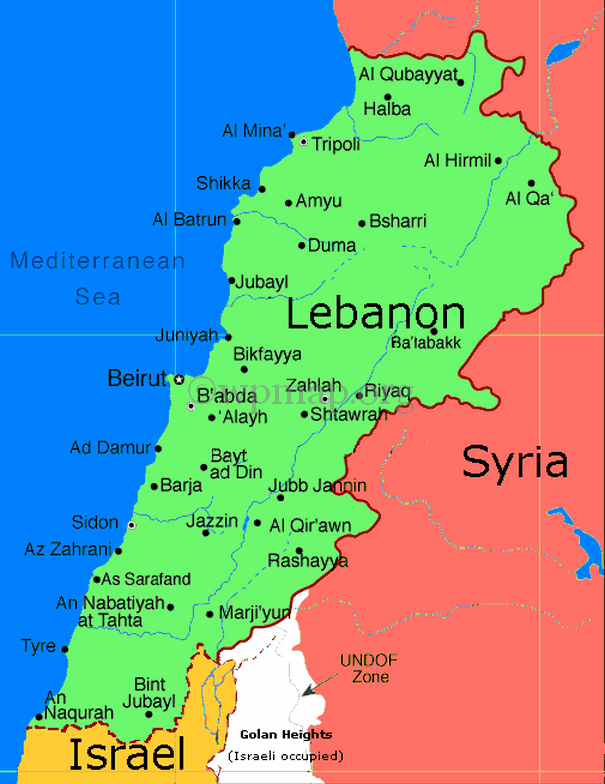 Paris of the Middle East" and the glamour of its stars helps the country to live up to this image. For instance, look at Nancy Ajram, who in my opinion, is the face of the young Lebanese generation. She is gorgeous and has one of those voices that sounds good on any style of song. One of her best songs is "Fi Higat"http://www.youtube.com/watch?v=h57S5Bxmcb4 She could be called the Britney Spears of the region. She is" Lebanon's Sweetheart" and will always be relevant.
Paris of the Middle East" and the glamour of its stars helps the country to live up to this image. For instance, look at Nancy Ajram, who in my opinion, is the face of the young Lebanese generation. She is gorgeous and has one of those voices that sounds good on any style of song. One of her best songs is "Fi Higat"http://www.youtube.com/watch?v=h57S5Bxmcb4 She could be called the Britney Spears of the region. She is" Lebanon's Sweetheart" and will always be relevant.
Nancy Ajram
There is also Myriam Fares, "The Queen of the Stage." She pushes the envelope just enough and is a great dancer and singer. She has reinvented herself many times during her career and has become a triple threat. She is well suited for the Khaleeji songs she has been doing lately. Her best videoclip is "Al Gasayed" http://www.youtube.com/watch?v=NAbd1WIel74 Of course, I can not forget Haifa Wehbe. She is a very controversial figure but I must say that I do respect her. She is a 
Myriam Fares
businesswoman after all and has made a fortune from her image and persona. She also has some enjoyable and catchy songs like "Enta Tani." http://www.youtube.com/watch?v=hW4h9zpAIgc Some other singers who are not as famous but are equally and even more talented are Adam and Carole Samaha. Adam is nice to look at :) and puts
Haifa Wehbe
so much emotion and romance in his songs. My personal favorite is "Kol Wahed"http://www.youtube.com/watch?v=rz3uAdmrUvE Carole Samaha is just an all around powerful singer.She showcases all her range on "Khallik Behalak"http://www.youtube.com/watch?v=kncb3G41UQM You can tell that she puts most of her effort into making good music.
Adam
Why do regular women and celebrities feel the need to be so fake. For some reason it has become fashionable to have fake nails, eyelashes,  hair, hair color, eye color, body parts, and faces. There is nothing wrong with enhancing what you have so that you feel good about yourself and confident. A little lipstick/gloss, nail polish, brow sculpting, and powder can work wonders for most women but when one smears their face with so much ghostly white foundation and enlarges their lips so that they resemble a catfish, the look
hair, hair color, eye color, body parts, and faces. There is nothing wrong with enhancing what you have so that you feel good about yourself and confident. A little lipstick/gloss, nail polish, brow sculpting, and powder can work wonders for most women but when one smears their face with so much ghostly white foundation and enlarges their lips so that they resemble a catfish, the look becomes ridiculous. Since when is the natural eye color of Egyptian women blue? When did the craze for Michael Jackson noses infect
becomes ridiculous. Since when is the natural eye color of Egyptian women blue? When did the craze for Michael Jackson noses infect  us? Do eyebrows really need to be painted on in the darkest black? There are many celebrity women who have obviously had plastic surgery and deny it but even a little plastic surgery is not so bad. But of course we all know those who take it too far.
us? Do eyebrows really need to be painted on in the darkest black? There are many celebrity women who have obviously had plastic surgery and deny it but even a little plastic surgery is not so bad. But of course we all know those who take it too far.
 Bob Marley on Pan African Flag
The Rasta are a group that are recognized and famous worldwide. They are most often characterized and identified by their dreadlock hairstyle and their use of Cannabis of Marijuana, but the ideology is much deeper than this. It originally started as a movement that urged the African diaspora to "go back to Africa" physically, mentally, and emotionally. This movement developed in the 1930s in Jamaica initially under the leadership of Marcus Garvey and it sought to give many blacks around the world, who had been
Bob Marley on Pan African Flag
The Rasta are a group that are recognized and famous worldwide. They are most often characterized and identified by their dreadlock hairstyle and their use of Cannabis of Marijuana, but the ideology is much deeper than this. It originally started as a movement that urged the African diaspora to "go back to Africa" physically, mentally, and emotionally. This movement developed in the 1930s in Jamaica initially under the leadership of Marcus Garvey and it sought to give many blacks around the world, who had been
 Marcus Garvey
displaced because of the Atlantic Slave Trade, a sense of pride in their heritage. Blacks were urged to reject Babylon ,which represents materialism and oppression, and to take up Zion, which represents Ethiopia or the Promised Land and Heaven on Earth.
Marcus Garvey
displaced because of the Atlantic Slave Trade, a sense of pride in their heritage. Blacks were urged to reject Babylon ,which represents materialism and oppression, and to take up Zion, which represents Ethiopia or the Promised Land and Heaven on Earth. Caribbean Map
Ethiopia is seen as the Promised land because it is the "birthplace of humankind" and because it was the only African country not colonized by European powers. The name Rastafari itself comes from the Amharic (Official language of Ethiopia) Ras "head" and Tafari "man to be feared, hero." The emperor of Ethiopia from 1930-1974 was Haile Selassie, whom Rastas revere as the reincarnation of Jesus Christ. Selassie himself never acknowledged this title.
Caribbean Map
Ethiopia is seen as the Promised land because it is the "birthplace of humankind" and because it was the only African country not colonized by European powers. The name Rastafari itself comes from the Amharic (Official language of Ethiopia) Ras "head" and Tafari "man to be feared, hero." The emperor of Ethiopia from 1930-1974 was Haile Selassie, whom Rastas revere as the reincarnation of Jesus Christ. Selassie himself never acknowledged this title.
 Emperor of Ethiopia, Haile Selassie
The Rastafarian African Spritual ideology is sometimes called an Abrahamic religion. The adherents are mainly based in Jamaica which is a predominantly Christian country and Rastas share many of the same beliefs of Jews and Christians. The dreadlock hairstyle is associated with pride in Afro hair and heritage, as well as, the Nazirites in Judaism, certain biblical verses and Hindu holy men who also wear the matted locks. Today dreadlocks are a hairstyle that many including African Americans and non-African peoples wear to connect to their heritage or just because they like the way they look. Not all who wear dreadlocks are Rasta and all Rastas do not have dreadlocks. Cannabis use is supported by
Emperor of Ethiopia, Haile Selassie
The Rastafarian African Spritual ideology is sometimes called an Abrahamic religion. The adherents are mainly based in Jamaica which is a predominantly Christian country and Rastas share many of the same beliefs of Jews and Christians. The dreadlock hairstyle is associated with pride in Afro hair and heritage, as well as, the Nazirites in Judaism, certain biblical verses and Hindu holy men who also wear the matted locks. Today dreadlocks are a hairstyle that many including African Americans and non-African peoples wear to connect to their heritage or just because they like the way they look. Not all who wear dreadlocks are Rasta and all Rastas do not have dreadlocks. Cannabis use is supported by  Bob Marley
biblical verse and associated with early Hindu immigrants to Jamaica who used it. The use of Cannabis is considered a sacrament and spiritual act. Rastas use the pan-African colors of red, green, and yellow while the Jamacian flag colors are green, black, and yellow. Devout Rastas also eat a raw vegan diet.
Bob Marley
biblical verse and associated with early Hindu immigrants to Jamaica who used it. The use of Cannabis is considered a sacrament and spiritual act. Rastas use the pan-African colors of red, green, and yellow while the Jamacian flag colors are green, black, and yellow. Devout Rastas also eat a raw vegan diet.
 Zahra Redwood, Miss Jamaica (2007)
Rasta culture was spread worldwide through Reggae music. The most famous musician was Bob Marley a native Jamacian. His music helped to expand the Rasta ideology from the Carribean country to all corners of the world. Some of his greatest hits were "No Woman No Cry"http://www.youtube.com/watch?v=n4kpqDF9j6Q and "Could You Be Loved."http://www.youtube.com/watch?v=sL_BcaI0i0w Dreadlocks and the music of Marley can be seen and heard in all corners of the globe. The Rastafari even reached the Promised Land of Ethiopia where many have immigrated. Today many native Ethiopians and other Africans are also making their own Reggae music in African languages and trying to continue the pan-African legacy.
Zahra Redwood, Miss Jamaica (2007)
Rasta culture was spread worldwide through Reggae music. The most famous musician was Bob Marley a native Jamacian. His music helped to expand the Rasta ideology from the Carribean country to all corners of the world. Some of his greatest hits were "No Woman No Cry"http://www.youtube.com/watch?v=n4kpqDF9j6Q and "Could You Be Loved."http://www.youtube.com/watch?v=sL_BcaI0i0w Dreadlocks and the music of Marley can be seen and heard in all corners of the globe. The Rastafari even reached the Promised Land of Ethiopia where many have immigrated. Today many native Ethiopians and other Africans are also making their own Reggae music in African languages and trying to continue the pan-African legacy.


from Ali Imran 3:78-80
And lo! there is a party of them who distort the Scripture with
their tongues, that ye may think that what they say is from the Scripture, when
it is not from the Scripture. And they say: It is from Allah, when it is not
from Allah; and they speak a lie concerning Allah knowingly. (78) It is not
(possible) for any human being unto whom Allah had given the Scripture and
wisdom and the prophethood that he should afterwards have said unto mankind: Be
slaves of me instead of Allah; but (what he said was): Be ye faithful servants
of the Lord by virtue of your constant teaching of the Scripture and of your
constant study thereof. (79) And he commanded you not that ye should take the
angels and the prophets for lords. Would he command you to disbelieve after ye
had surrendered (to Allah)? (80)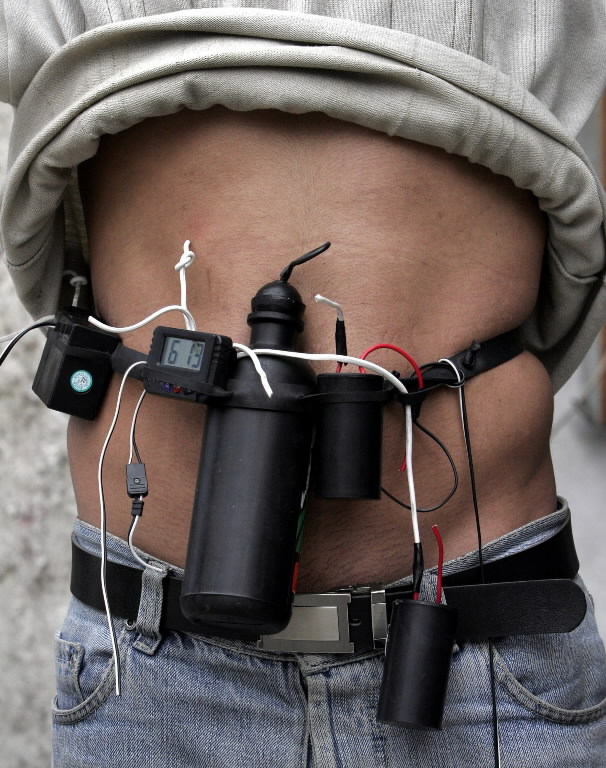
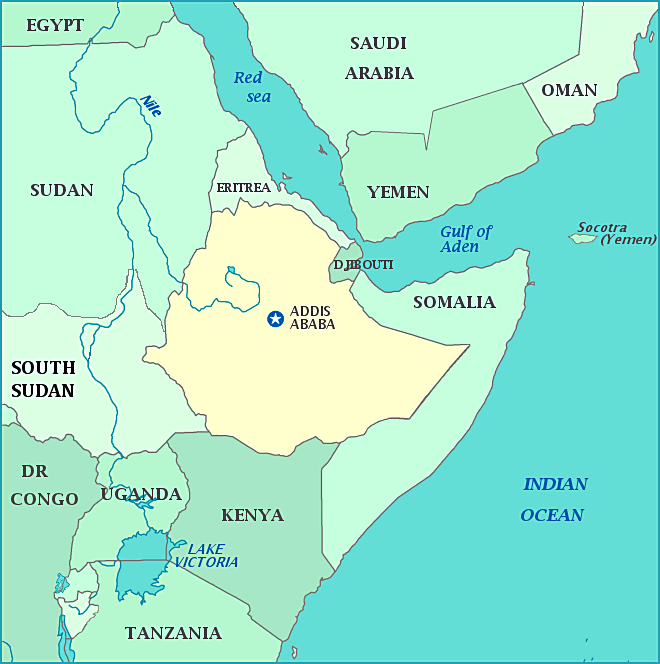 Ethiopian music is one of the most unique kinds of music on the African continent. Ethiopian music is very diverse and each ethnic group (Amhara, Oromo...) has their own styles. Most people would expect the music to be heavy on drums but for the most part they are largely absent.
Ethiopian music is one of the most unique kinds of music on the African continent. Ethiopian music is very diverse and each ethnic group (Amhara, Oromo...) has their own styles. Most people would expect the music to be heavy on drums but for the most part they are largely absent. Zeritu Kebede
There is mainly a use of stringed and woodwind instruments but in recent years there has been more use of electronic music. In the Ingurguro style, singers employ a unique kind of trilling and undulating of their voices and female vocalists often sing in high pitched falsettos. The Zefen style, which is more relaxed, is accompanied by the Iskita, one of Ethiopia's most famous dances.
Zeritu Kebede
There is mainly a use of stringed and woodwind instruments but in recent years there has been more use of electronic music. In the Ingurguro style, singers employ a unique kind of trilling and undulating of their voices and female vocalists often sing in high pitched falsettos. The Zefen style, which is more relaxed, is accompanied by the Iskita, one of Ethiopia's most famous dances.
 Tigist Fantahun
There are also great styles other than traditional Folk ,like Religious and a more westernized Contemporary style that is popular with younger generations. Ethiopia has some of the greatest RnB and Hip Hop artists in Africa. Zeritu Kebede sings mostly westernized pop and RnB.http://www.youtube.com/watch?v=KYcRC9Ang8E With such a powerful and soulful voice, I liken her to an "Ethiopian Mariah Carey." Another young female singer I am a fan of is Tigist Fantahun who also sings RnB, pop, and traditional songs.http://www.youtube.com/watch?v=yx6qv4ziO7k She has a softer
Tigist Fantahun
There are also great styles other than traditional Folk ,like Religious and a more westernized Contemporary style that is popular with younger generations. Ethiopia has some of the greatest RnB and Hip Hop artists in Africa. Zeritu Kebede sings mostly westernized pop and RnB.http://www.youtube.com/watch?v=KYcRC9Ang8E With such a powerful and soulful voice, I liken her to an "Ethiopian Mariah Carey." Another young female singer I am a fan of is Tigist Fantahun who also sings RnB, pop, and traditional songs.http://www.youtube.com/watch?v=yx6qv4ziO7k She has a softer Abinet Agonafir
voice, but also a lot of range. Great male singers are Abinet Agonafirhttp://www.youtube.com/watch?v=DQcH_euSf5E and Tewodros (Teddy Afro) Kassahun.http://www.youtube.com/watch?v=7xMk6rQUDp4 I also enjoy the music of rappers like Jonny Raggahttp://www.youtube.com/watch?v=Ci7AX0rgqqw and Hailemichael (Haile roots) Getnet.http://www.youtube.com/watch?v=_7D39NQR-Ys These
Abinet Agonafir
voice, but also a lot of range. Great male singers are Abinet Agonafirhttp://www.youtube.com/watch?v=DQcH_euSf5E and Tewodros (Teddy Afro) Kassahun.http://www.youtube.com/watch?v=7xMk6rQUDp4 I also enjoy the music of rappers like Jonny Raggahttp://www.youtube.com/watch?v=Ci7AX0rgqqw and Hailemichael (Haile roots) Getnet.http://www.youtube.com/watch?v=_7D39NQR-Ys These  Haile Roots
artists use a lot of Reggae influences in their music. This is not very surprising since the Rastafari, who initially formed in Jamaica, believe that Ethiopia is the Promised Land.
Haile Roots
artists use a lot of Reggae influences in their music. This is not very surprising since the Rastafari, who initially formed in Jamaica, believe that Ethiopia is the Promised Land.
 Jonny Ragga
This is due to the fact that Ethiopia is the only African country that was not colonized and in part because of the rich heritage and ancient kingdoms which are even mentioned in the Bible. Ethiopia is called by many scientists and other scholars as the "Cradle of Civilization", where our first human
Jonny Ragga
This is due to the fact that Ethiopia is the only African country that was not colonized and in part because of the rich heritage and ancient kingdoms which are even mentioned in the Bible. Ethiopia is called by many scientists and other scholars as the "Cradle of Civilization", where our first human
 Teddy Afro
ancestors came from. Rastas also believe that the former King of Ethiopia, Haile Selassie, was an reincarnation of Jesus Christ which further explains the Rastafari/Ethiopia connection. More on the Rastafari and Ethiopa: Travel Destination in later posts... :)
Teddy Afro
ancestors came from. Rastas also believe that the former King of Ethiopia, Haile Selassie, was an reincarnation of Jesus Christ which further explains the Rastafari/Ethiopia connection. More on the Rastafari and Ethiopa: Travel Destination in later posts... :)
 Carole Samaha
Carole Samaha Paris of the Middle East" and the glamour of its stars helps the country to live up to this image. For instance, look at Nancy Ajram, who in my opinion, is the face of the young Lebanese generation. She is gorgeous and has one of those voices that sounds good on any style of song. One of her best songs is "Fi Higat"http://www.youtube.com/watch?v=h57S5Bxmcb4 She could be called the Britney Spears of the region. She is" Lebanon's Sweetheart" and will always be relevant.
Paris of the Middle East" and the glamour of its stars helps the country to live up to this image. For instance, look at Nancy Ajram, who in my opinion, is the face of the young Lebanese generation. She is gorgeous and has one of those voices that sounds good on any style of song. One of her best songs is "Fi Higat"http://www.youtube.com/watch?v=h57S5Bxmcb4 She could be called the Britney Spears of the region. She is" Lebanon's Sweetheart" and will always be relevant. Nancy Ajram
Nancy Ajram Myriam Fares
Myriam Fares Haifa Wehbe
Haifa Wehbe Adam
Adam





